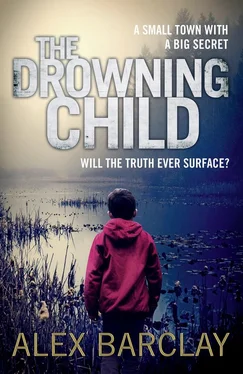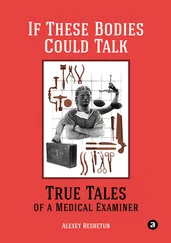I wonder what it feels like to almost drown.
‘There is no greater urge than the urge to breathe,’ said Deb, ‘so when you are preventing someone from doing so, it’s torture in the most horrific form. Unlike other tortures where the victim can pass out – like, as I mentioned, in strangulation – with drowning, you don’t pass out, plus you suffer the excruciating pain of inhaling water.’
I no longer wonder what it feels like to almost drown.
‘Drowning is a silent death,’ said Deb. ‘There is none of the flailing and shouting and arm-waving you see in movies. Drowning does not happen the way you might think it does.’
‘Sorry, Deb,’ said Ren, ‘back to what you said a minute ago: are you saying there could be victims out there who were near-drowned by this guy, but are still alive, that he let them go?’
‘It’s a possibility, yes,’ said Deb. ‘But, if that is the case, we don’t know yet when near-drowning became “not enough” for the killer. We don’t know when drowning to death became his thing.’ She paused. ‘So you’ll want to know, what kind of person your killer is. ASSes are smart: what they do to their victims happens silently, and, usually, leaves no marks. If I electrocute you, if I beat you, if I stab you, there will be clear evidence of this on your body. If your head is being held under water and, like I said, breathing is your greatest urge, that is what your body will put all its strength into: you will not be able to reach back and prize someone’s fingers off you, you will not be able to claw at them. You’ll be too busy fighting for your life. There are parents who use near-drowning to torture their children because it leaves no marks. In a domestic setting, the perpetrator is “lucky” to have a private area in which to do it: a bathroom. They’re locked in, they have control, privacy is automatically given by others. But even outside of that, not a lot is required to carry out this punishment – I could drown you in a bucket of water if I wanted to. I could drown you in a busy lake on a summer’s day and no one might notice.’
It’s really not safe to go back in the water.
‘Any fetishistic behavior, like aquatic sadism, develops when something causes you a pleasant sensation, when something arouses you. It might be an image, an object, an event, an item of clothing. It stays with you and you are compelled to return to it – you recreate the circumstances of whatever that was in order to feel that sensation again. So your killer is likely to have been near-drowned himself, or has certainly connected drowning or water with feelings of arousal. Maybe he or she witnessed a drowning—’
‘If this is sexual, why have none of the victims been raped?’ said Wiley.
‘Because, for this killer,’ said Deb, ‘the power and the rush comes from the drowning.’
‘So it’s not a sexually motivated crime,’ said Wiley.
Not as simple as that, Wiley.
‘It’s possible that there is a masturbatory element,’ said Deb, ‘though, obviously, like I said, there will no longer be evidence of that on the bodies of Aaron Fuller and Luke Monroe.
‘“Tragic accident”,’ said Deb, and she had the full attention of the room again. ‘We hear those words paired together a lot, we read about them in news reports. They’re powerful words, with an unspoken story behind them. We immediately think of innocent, weeping relatives. But what saddens me the most about the words “tragic accident” is that they’re often the first words that people will attribute to a drowning death. We’re programmed to think that way, to be afraid of water, to be afraid of what water can do to us . But we’re not made aware of how someone could use water to do something to us.’
Good point.
‘You have patrol officers going to a six-year-old child lying dead in a field,’ said Deb. ‘En route, they’re thinking “why is the child in the field and why is it dead?” They arrive, they secure the scene, there’s no question about it. Take that child out of the field, put it into a pond, without realizing it, the officers are thinking “tragic accident” before they even get to the scene: child in a bathtub, teen at a pool party, woman in a hot tub...’ She looked around the room. ‘So, while I have you all here, hanging on my every word, I will shamelessly use this opportunity to implore you all not to jump to “accident”. Instead, I ask you to wait, to observe, to process, to look around you, to look all over the home, or all around the pool, or around whatever body of water holds the body of your victim. It is a crime scene like any other. It should be preserved. And, like any other crime scene, you can’t be told by the witness or witnesses what went down and take that at face value: “I turned my back for thirty seconds”, “I didn’t know he was in the bathroom”, “he must have filled the tub himself”, “he had been depressed for weeks”, “she had always threatened to do something like this”...’
I love listening to you, Deb McLean.
‘I’m sure you’re all aware now about how the diatoms in the water showed that Aaron Fuller was not killed in Lake Verny,’ said Deb. ‘Once you have a five-hundred-milliliter sample of water from other possible sources, you can test it against the water from his sphenoid sinus to see if there’s a match. There is also a way of linking the UNSUB to the body of water: diatoms have a shell called a frustule. It’s made of silica, is really durable, and withstands all kinds of conditions. These little shells can hang around a long time. I worked a case where a guy was caught because he had drowned a victim in a lake, put her body in the trunk of his car, and driven two hundred miles away to dump it in woodland. We found silica shells in the trunk of his car that matched the ones found in the water from the victim’s sphenoid sinus. So you might find them in the UNSUB’s vehicle, on his clothing, his sneakers, etc.’ She paused. ‘And hopefully, you will stop him before he takes another life.’
Caleb Veir, please be alive.
Ren sat in the kitchen having coffee with Deb when she was finished.
‘I was thinking, after what you said, that we should take a look at any previous drownings in the area,’ said Ren, ‘or any unusual water-based incidents, if the UNSUB has a history.’
‘Definitely,’ said Deb.
‘And in terms of previous victims of near-drownings, apart from hospital admissions...’
‘See, that’s the problem,’ said Deb. ‘What I said before – it’s a sinister crime. It leaves very little trace. And, you know what, it’s the type of thing that people don’t seem to take seriously. Child victims have tried to report these things before and people just don’t believe them. I think if a child said he was being molested, he would be believed quicker.’
‘I guess it seems so unreal,’ said Ren. ‘Or just, I don’t know – someone could construe it as “of course your mother/father/brother, etc. wouldn’t do that to you”. Like, what a screwed-up thing to do. As if all the other shit that people do to each other isn’t.’
‘I know,’ said Deb.
‘Are ASSes drawn to water in general?’ said Ren. ‘Like, John Veir is an ex-military diver, Seth Fuller was a child swimming champ.’
‘Not really, no,’ said Deb. ‘That in itself wouldn’t ring my alarm bells. But if the victims are children, well, we all know UNSUBS will put themselves where they’ll be around them.’
‘Are there any other signs that someone is or was a victim of near-drowning?’ said Ren.
Deb let out a breath. ‘Depending on how long-term the abuse is, maybe lung issues, recurring pneumonia...’
Читать дальше
Конец ознакомительного отрывка
Купить книгу












